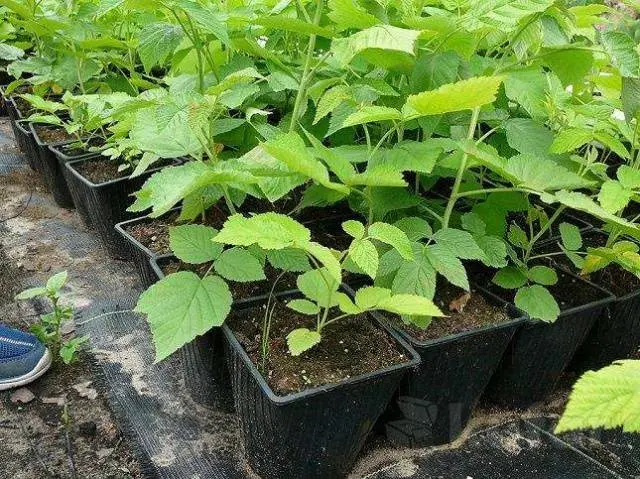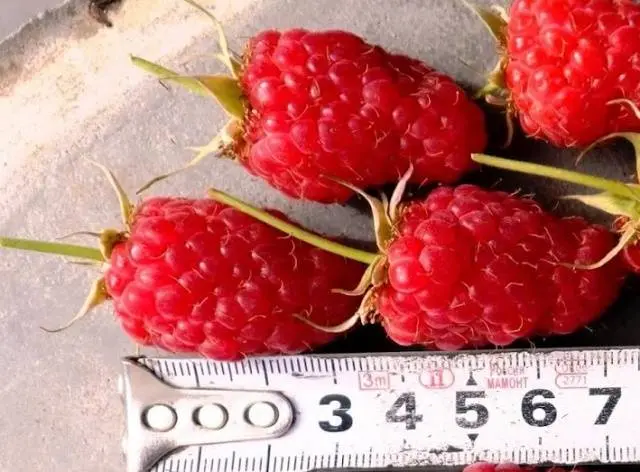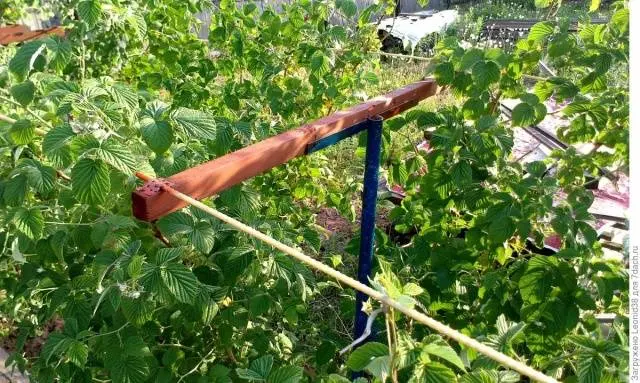Contents
Raspberry Senator is a productive variety intended for farms and garden plots. The variety was bred by the breeder V.V. Kitchina. Berries have good commercial properties: large size, dense pulp, transportability. Due to the high cold resistance, the plants endure harsh winters.
Botanical description
Description of the raspberry variety Senator:
- medium early maturation;
- height up to 1,8 m;
- lack of spikes;
- slightly sprawling bush;
- smooth and powerful shoots;
- high ability to form shoots;
- 10-12 berries ripen on each shoot.
Characteristics of Senator berries:
- large sizes;
- red-orange color;
- shiny surface;
- conical shape of raspberries;
- sweet and sour taste;
- average weight up to 7-12 g, maximum – 15 g;
- dense pulp.
The yield of the Senator variety reaches 4,5 kg of berries per bush. The fruits are easily removed from the bush, do not crumble after ripening, and are not prone to decay. The Senator variety is winter-hardy, without shelter it survives winter frosts down to -35 ° С.
Fruits tolerate transportation well, are suitable for freezing and processing. Jams, jams, compotes are prepared from raspberries, and fresh berries are also consumed.
Planting raspberries
Raspberries of the Senator variety are planted on a prepared site. Before planting, the soil is fertilized with organic matter or minerals. Seedlings of the Senator variety are purchased from trusted suppliers or obtained independently from the mother bush.
Breeding varieties
When buying seedlings of raspberry Senator, you should contact nurseries. Quality seedlings have a developed root system and several shoots with buds.

If the raspberry Senator is already planted on the site, then the variety is propagated in any of the following ways:
- root suckers;
- cuttings;
- division of the bush.
In the spring, root offspring up to 10 cm high are selected and separated from the bush. Plants are transplanted to a separate bed, provide them with regular watering. In autumn, raspberries are transferred to a permanent place.
To propagate raspberry Senator, they take a rhizome with cuttings and divide it into strips 8 cm long. The cuttings are planted in trenches, covered with earth and watered abundantly. During the season, shoots will appear, which are transplanted to the chosen place in the fall.
Raspberry Senator grows in one place for no more than 10 years. When transplanting, new plants are obtained by dividing the mother bush. The sections are treated with charcoal, then the material is planted in the ground.
Site Selection
Raspberry Senator prefers lit places that are not exposed to wind. The yield and taste of berries depend on access to sunlight.
Under the raspberry allot a flat area. Moisture often accumulates in the lowlands, which negatively affects the development of shoots. At higher elevations, the soil dries out faster.
Raspberries are not grown after strawberries, potatoes, tomatoes, peppers and eggplants. The best predecessors are representatives of legumes and cereals. When growing raspberries on the site, re-planting the crop is permissible no earlier than after 5 years.
Before planting a crop, it is recommended to grow green manure: lupine, phacelia, rye, oats. 2 months before the work, the plants are dug up, crushed and embedded in the soil to a depth of 25 cm. Green manures enrich the soil with useful substances.
A month before planting, the site is dug up. Under the raspberries, 6 kg of compost and 200 g of complex fertilizer per 1 sq. m.

Order of work
Senator raspberries are planted in autumn or early spring. When planted at the end of September, the plants will have time to adapt to new conditions before the onset of cold weather. The sequence of work does not depend on the selected landing time.
The order of planting raspberry Senator:
- Under the bushes, trenches or planting holes are prepared with a diameter of 40 cm and a depth of 50 cm.
- Plant roots are placed for 3 hours in a growth stimulator.
- Part of the soil is poured into a hole, a raspberry seedling is placed on top.
- The roots are covered with soil, compact it and leave a depression around the plant for watering.
- Raspberries are watered abundantly.
Young plants are demanding on moisture. Plantings are watered, and the soil is mulched with straw or humus.
Variety care
Raspberry Senator provide the necessary care, which consists in watering, fertilizing and pruning. Plants respond positively to the introduction of organic matter and mineral solutions into the soil. To protect the variety from diseases and pests, bushes are sprayed.
High cold resistance allows Senator raspberries to endure winter frosts. Autumn care consists in preventive pruning of shoots.
Watering
Regular watering ensures high yields of the Senator variety. However, stagnant moisture leads to decay of the root system, which does not get access to oxygen.
As described, the Senator raspberry does not tolerate drought well. With a long absence of moisture, the ovaries fall off, and the fruits become smaller and lose their taste.
For irrigation, warm water is used, which has settled in barrels. Raspberries Senator are watered in the morning or evening. On average, moisture is applied every week. In hot weather, more frequent watering is required.

After adding moisture, loosen the soil and weed weeds. Mulching the soil with humus, peat or straw helps to reduce the frequency of watering. In autumn, abundant watering is carried out, helping the plants to overwinter.
Feeding
When using fertilizers when planting, Senator raspberries are provided with nutrients for 2 years. In the future, the plants are fed annually.
In early spring, plantings are watered with slurry. The composition of the fertilizer includes nitrogen, which helps to grow new shoots. In summer, it is better to refuse nitrogen dressings in order to ensure fruiting.
In summer, Senator raspberries are fed with superphosphate and potassium sulfate. For 10 liters of water, 30 g of each fertilizer is measured. Plants are watered with the resulting solution during flowering and berry formation.
Universal fertilizer for raspberries – wood ash. It contains potassium, phosphorus and calcium. Ash is added to the water a day before irrigation or embedded in the soil during loosening. In summer, plantings can be fed with bone meal.
Tying
According to the description of the variety and photo, Senator raspberry is a tall plant. To prevent the shoots from falling to the ground, a trellis is installed in the raspberries. When placed on a trellis, the shoots are evenly illuminated by the sun, the plantings do not thicken, and plant care is simplified.
The order of the construction of the trellis:
- Supports made of metal or wood up to 2 m high are installed along the edges of the rows with raspberries. Iron pipes and small diameter rods can be used.
- If necessary, put additional supports every 5 m.
- A wire is stretched between the supports at a height of 60 cm and 120 cm from the ground.
- The shoots are placed on a trellis in the form of a fan and fastened with twine.

Trimming
In the spring, raspberry Senator prunes frozen branches to healthy buds. Broken and dry shoots are also eliminated. Up to 10 branches are left on the bush, the rest are cut out at the root.
In autumn, two-year-old branches on which the crop has ripened are removed. It is better not to delay the procedure and carry out after harvesting the berries. Then, before the end of the season, new shoots will be released on the bushes.
Diseases and pests
Raspberry variety Senator is resistant to major crop diseases. With timely care, the risk of developing diseases is minimized. In raspberries, weeds are regularly eliminated, old and diseased shoots are cut off.
Raspberries are attacked by gall midges, aphids, weevils, and spider mites. From pests, chemicals Karbofos and Aktellik are used. Processing is carried out before the start of the growing season and at the end of the season.
In summer, for preventive purposes, raspberries are sprayed with infusions on onion peel or garlic. To keep the product longer on the leaves, you need to add crushed soap. Pests are also repelled by spraying wood ash or tobacco dust.
Reviews of gardeners
Conclusion
Raspberry Senator is characterized by a good taste of berries and high yields. Fruits have universal application, are stored for a long time, are suitable for freezing and processing. Caring for the Senator variety involves regular watering, as the plant does not tolerate drought. Several times during the planting season they are fed with minerals or organic matter.









